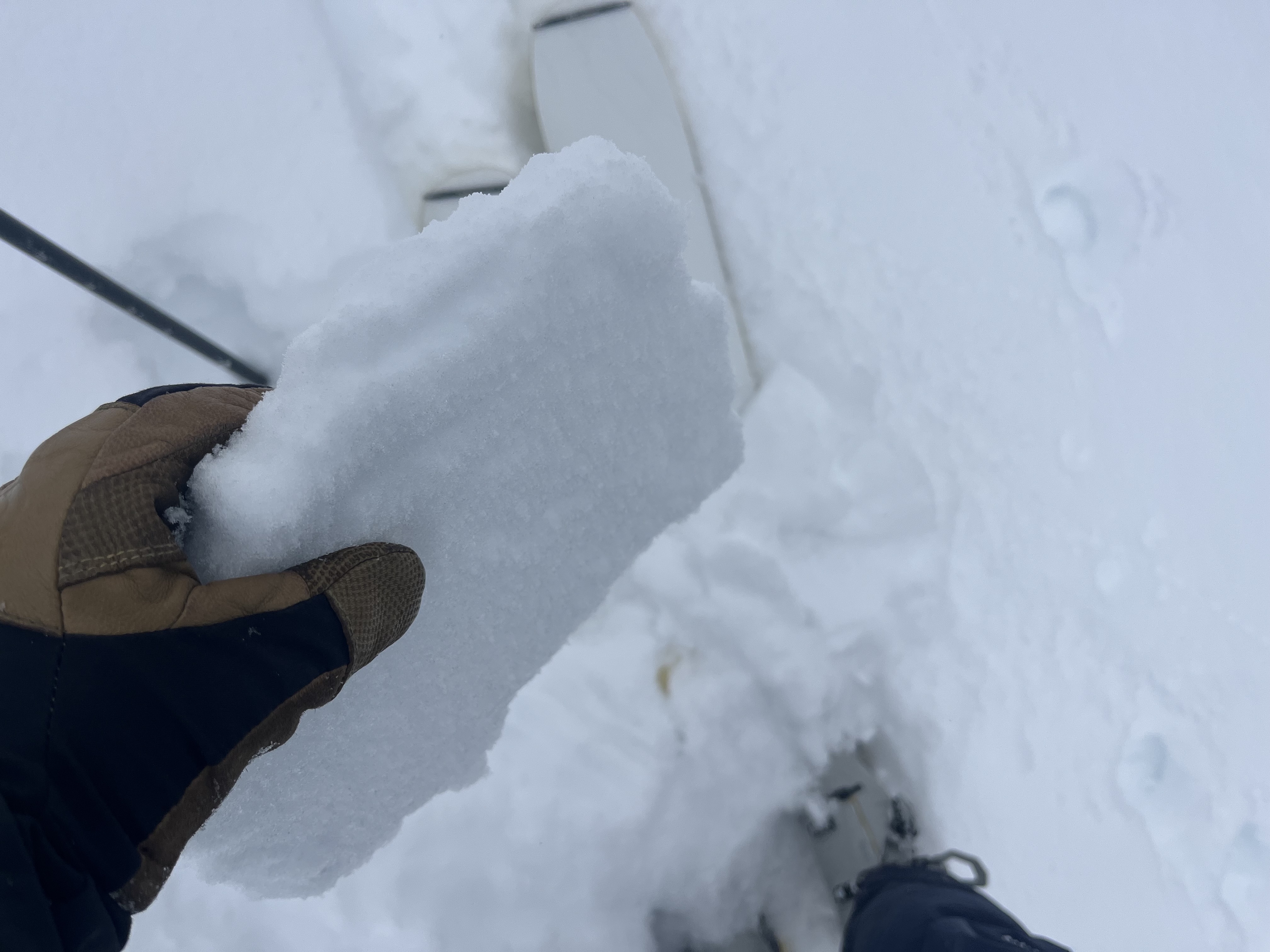Recent drifting has built stiff wind slabs on weak, sugary surface snow in exposed terrain, making it possible to trigger 1-2 foot thick slabs on steep, wind-loaded slopes. These slabs are easy to identify and may produce hollow drum-like sounds. Wind-drifted snow is generally stiffer than the surrounding snow, and with the east winds, expect slabs to form in unlikely areas.
- Wind-drifted snow is most likely to be found on the lee side of ridges, near cornices, and around terrain features like cliff bands and gullies.
- Many slabs may be sensitive and easy to trigger, though hard slabs may release suddenly, similar to yesterday’s unintentionally triggered avalanche.
- Watch for shooting cracks, a clear sign of instability, and be aware that some slabs may trigger remotely.
Breakable wind crust was the theme yesterday, though we did find some soft snow in very sheltered, lower-angle terrain.
While the snow is stable on most slopes, a dormant, persistent weak layer near the ground is still a potential problem in isolated or outlying terrain. Recent drifting may overload slopes with poor snow structure, and although unlikely, isolated hard slab avalanches, breaking 2 to 4 feet deep on a persistent weak layer near the ground are possible, and the consequences could be severe. Deep hard slab avalanches are possible in extreme mountain terrain, and rocky, windswept slopes in northerly facing terrain with thin snow cover are suspect.
Isolated hard slab avalanches might be triggered from a "sweet spot" or a shallower part of the slab. (see Bruce Jamieson's YouTube video below)










